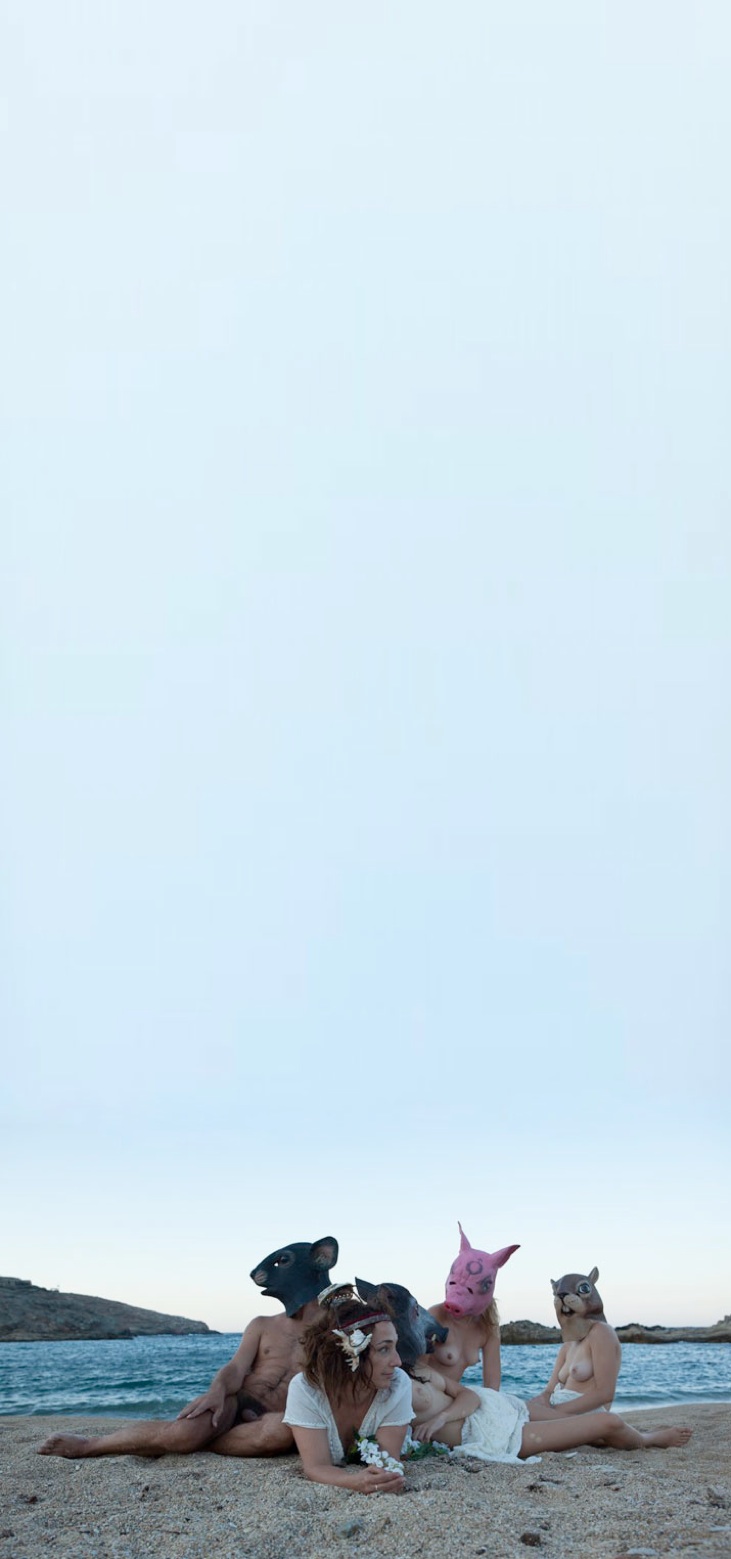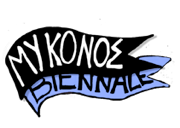The theme of the 2013 Mykonos Biennale is a parody of the Crisis Industry’s choice of Greece as a main protagonist in their current financial disaster scenario.
The Crisis punishes in an exemplary way paganistic Greece, who is idly dancing and drinking as the “southern latino lover”, the grasshopper of Aesop’s story.
Greece as the juvenile Pinocchio is persuaded by the cat and the fox, the northern rich buddies, to sell his books to join their party while the old Geppetto must sell his coat to pay the bills. With the broken Geppettos, the uprooted forests of Chalkidiki, the blackened valleys of solar panels, Greece is depressed and bullied by the global media.
“Idleness is the mother of evil” and Greece is unemployed. 17 million tourists want to see her swim, sing and dance because, oh what a coincidence! It’s summer, Adonis with Persephone are back on earth feasting together with the guitar playing grasshopper.
Is belly dancing considered a legitimate job? And if yes, when do the people qualify for their pension? Is retirement obligatory? Can the hungry bear cubs dance? Can old men dance? Was the empress Theodora the daughter of a bear tamer?
Was emperor Justinian the nephew of an Albanian immigrant? What connects Europe with the Holy Alliance? Has the age of the empire returned? If money is the Crisis and Nature is paganism, is this relationship an oxymoron? As both Annas in Brecht’s Seven Deadly Sins, the role of morality change at the beat of global hypocrisy. As the birds sing, the waves unravel and Pinocchio’s fairy is disguised as Art and wrestles with Aladdin’s genie and the three consumer wishes. To be continued in alternative Mykonos where the renowned nudist emperor will visit with his new clothes.




